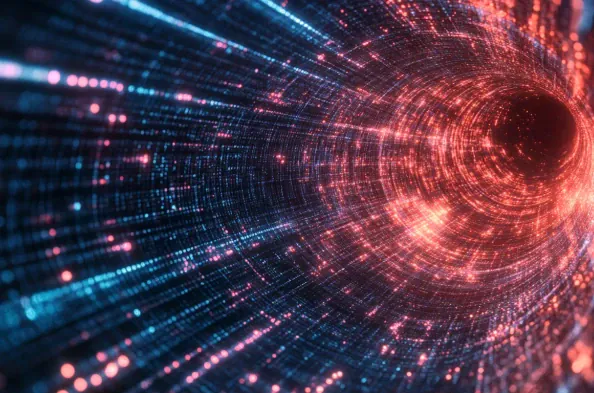In a pioneering move, Toshiba Europe Limited has announced advancements to its commercially available quantum key distribution (QKD) systems, now incorporating the latest post quantum cryptography (PQC) standards. As society becomes increasingly dependent on encrypted data to ensure confidentiality, this latest update represents a critical step in evolving quantum-safe networking platforms. Traditional security methods leverage ‘one-way’ mathematical functions that are straightforward to compute in one direction but nearly impossible to reverse, even with the most powerful supercomputers available today.
Quantum Threats and the Need for New Cryptographic Methods
Traditional vs. Quantum-Safe Security
The imminent threat posed by quantum computers, which can potentially break traditional encryption methods by solving these one-way problems efficiently, necessitates the development of new cryptographic techniques that are robust against quantum attacks. Recognizing this urgency, the EU in 2024 recommended collaborative efforts to develop quantum-safe networks to address forthcoming security challenges. As we propel into an era where quantum computers emerge as legitimate threats, the need for innovative solutions becomes increasingly apparent.
QKD and PQC are the forefront methods crafted to counter quantum-based threats. QKD is a hardware-centric approach that uses light particles to convey secure encryption keys over optical networks and has demonstrated resilience against all known computational attacks, including those involving quantum computers. For more than two decades, QKD technology has seen deployments worldwide, attesting to its reliability and security benefits. On the other hand, PQC utilizes newly devised algorithms based on one-way functions currently resistant to quantum computer attacks. In 2024, after comprehensive evaluations, the National Institute for Standards and Technology (NIST) introduced the first batch of PQC algorithms, which now have been incorporated into Toshiba’s quantum-safe platform.
EU’s Call for Collaborative Quantum-Safe Networks Development
The European Union’s call in 2024 to collaborate on quantum-safe network development underscores the necessity for synchronized efforts across borders to protect data integrity against evolving quantum threats. This call to action was fostered by the recognition that singular efforts might fall short in addressing the extensive challenges posed by rapidly advancing quantum technology. By pooling resources and expertise, the EU aims to create a cohesive and robust defense mechanism against potential quantum attacks, reflecting the significant global concern regarding data security.
Toshiba’s integration of PQC standards into its QKD systems aligns seamlessly with this directive, marking a crucial milestone in constructing fortified quantum-safe networks. This enhancement enables organizations to adopt both QKD and PQC technologies more seamlessly, providing an indispensable ‘defense in depth’ strategy. By converging the hardware-based assurance of QKD with the software-based adaptability and scalability of PQC, Toshiba’s platform ensures heightened security versatility and robustness.
Combining QKD and PQC for Comprehensive Security
Defense in Depth Strategy
Merging QKD and PQC epitomizes a strategic ‘defense in depth’ approach, strengthening security through multiple layers that combine the hardware-based impenetrability of QKD with the software-based flexibility of PQC. This synergy offers a fortified safeguard against quantum-based threats that might overwhelm singular security measures. Toshiba’s newly enhanced capability allows its QKD systems to inherently utilize the NIST PQC Key Encapsulation Mechanism (ML-KEM) standard, enabling the seamless integration of QKD, PQC, and traditional encryption methods such as Diffie-Hellman to assure advanced protection levels.
This integration is not merely theoretical but practical, as it comes as an option for newly acquired Toshiba QKD systems or as a software upgrade for the existing ones, ensuring that deploying future PQC algorithms can be smoothly accommodated in the platform. This flexible coexistence of QKD and PQC safeguards ensures that organizations can future-proof their security frameworks without overhauling their existing infrastructure.
Simplifying Implementation for Quantum-Safe Strategies
By simplifying the implementation process for both QKD and PQC, Toshiba’s advancements significantly strengthen organizational defenses against quantum-based attacks. The integration offers a seamless means for companies to bolster their security postures, accommodating emerging threats while maintaining agile and efficient operations. Andrew Shields, the Head of the Toshiba Quantum Technology Division, emphasized how incorporating PQC algorithms into QKD systems signifies a substantial progression, providing clients the needed agility and versatility in crafting a quantum-safe strategy that evolves with technological advancements.
This dual-method approach, combining the computational security of QKD with the burgeoning strength of PQC, delivers a comprehensive, agile, and future-proof tactic for safeguarding communications against quantum threats. The platform’s adaptability allows organizations to integrate future PQC algorithms as they are developed and validated, ensuring continuous protection. This streamlined path to quantum-safe networks is instrumental as it removes significant implementation barriers, thereby simplifying the deployment process for enhanced quantum security.
Conclusion
Toshiba Europe Limited has taken a groundbreaking step by announcing advancements to its commercially available quantum key distribution (QKD) systems. These systems now include the latest post-quantum cryptography (PQC) standards. As society increasingly relies on encrypted data to maintain confidentiality, this upgrade marks a significant milestone in the development of quantum-safe networking platforms. Traditional security measures often use ‘one-way’ mathematical functions, which are easy to compute in one direction but incredibly difficult to reverse, even with the most powerful supercomputers we have today. This ensures a high level of security, as decrypting the data without the correct key is virtually impossible. The integration of PQC with QKD systems offers a robust defense against future threats posed by quantum computers. This advancement suggests that our encrypted information, from personal data to business transactions, will be protected against emerging quantum technologies, thereby safeguarding privacy and security in the digital age.






